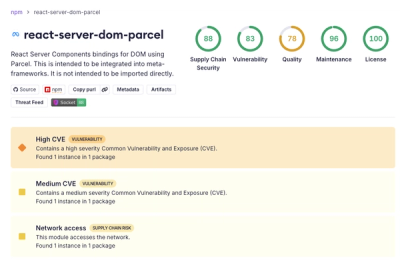
Security News
Deno 2.6 + Socket: Supply Chain Defense In Your CLI
Deno 2.6 introduces deno audit with a new --socket flag that plugs directly into Socket to bring supply chain security checks into the Deno CLI.
fakeredis
Advanced tools





Documentation is hosted in https://fakeredis.readthedocs.io/
FakeRedis is a pure-Python implementation of the Redis Protocol API. It provides enhanced versions of the redis-py/valkey-py Python bindings for Redis.
It enables running tests requiring Redis/ValKey/DragonflyDB/KeyDB server without an actual server.
It also enables testing compatibility of different key-value datastores.
That provides the following added functionality: A built-in Redis server that is automatically installed, configured and managed when the Redis bindings are used. A single server shared by multiple programs or multiple independent servers. All the servers provided by FakeRedis support all Redis functionality including advanced features such as RedisJson, RedisBloom, GeoCommands.
See official documentation for list of supported commands.
fakeredis-py is developed for free.
You can support this project by becoming a sponsor using this link.
FAQs
Python implementation of redis API, can be used for testing purposes.
We found that fakeredis demonstrated a healthy version release cadence and project activity because the last version was released less than a year ago. It has 3 open source maintainers collaborating on the project.
Did you know?

Socket for GitHub automatically highlights issues in each pull request and monitors the health of all your open source dependencies. Discover the contents of your packages and block harmful activity before you install or update your dependencies.

Security News
Deno 2.6 introduces deno audit with a new --socket flag that plugs directly into Socket to bring supply chain security checks into the Deno CLI.

Security News
New DoS and source code exposure bugs in React Server Components and Next.js: what’s affected and how to update safely.

Security News
Socket CEO Feross Aboukhadijeh joins Software Engineering Daily to discuss modern software supply chain attacks and rising AI-driven security risks.